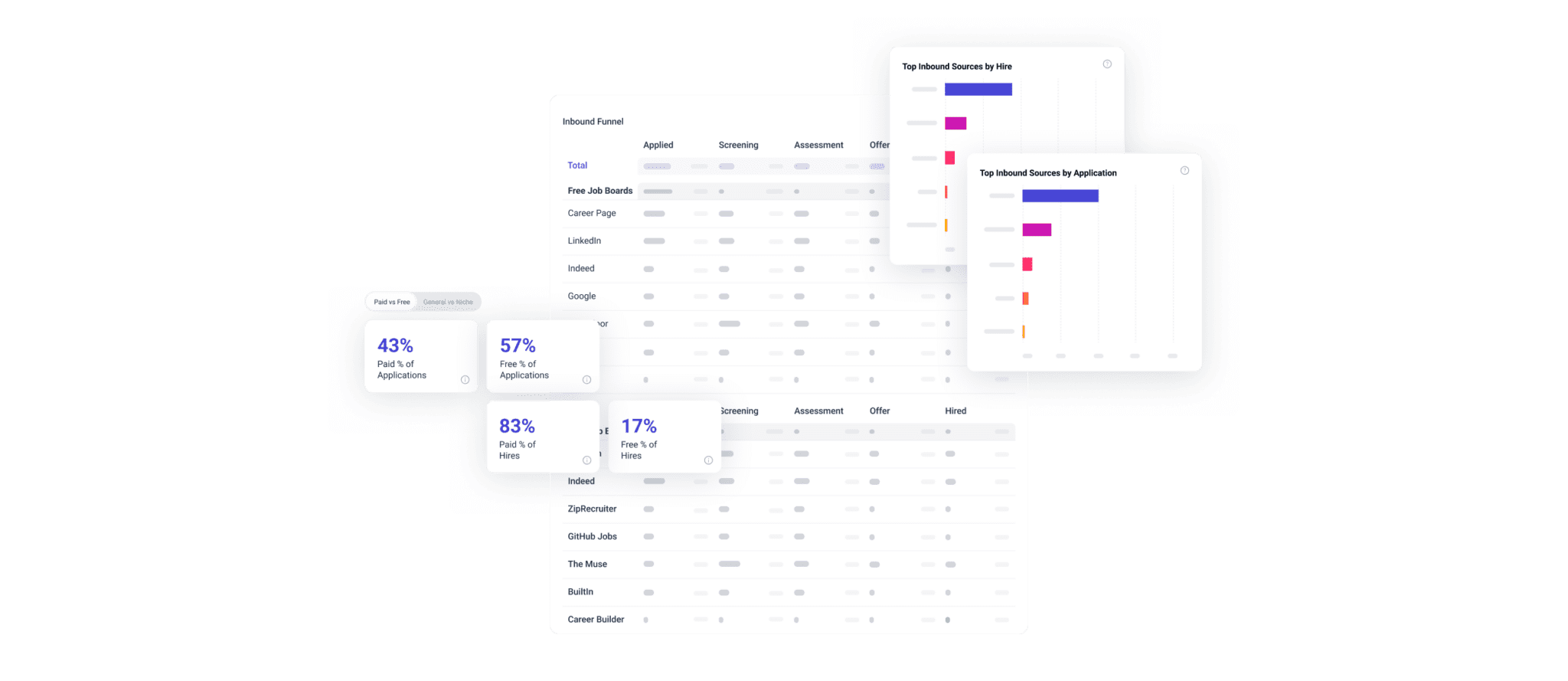Many hiring teams use ‘active’ sourcing methods such as referral programs and third-party recruiting firms in their diversity, equity, and inclusion efforts. But they can provide a more efficient and equitable hiring process by focusing on attracting organic candidates instead.
Organic candidates are job seekers who apply through online job boards. What makes them ‘organic’ is that they apply through a process that’s open to anyone with internet access. Rather than actively sourcing candidates, your hiring teams are simply putting jobs out there and letting applicants come to them. Everyone gets a shot.
Organic sourcing is fairer and more efficient
Organic sourcing is fundamentally different from candidate sourcing. Its ‘organic’ nature enables your hiring team to cast the widest net possible and offer an inherently fairer hiring process.
If your hiring team contracts with an outside recruiting firm, for example, you typically get candidates from the recruiting firm’s talent pipeline. When recruiters source on LinkedIn or Glassdoor, you get candidates who are active on those platforms. With referrals, you get candidates who know someone at your company.
These approaches can result in great candidates, but they limit the size of the net you cast. That does two things. One, it creates a hiring process where only certain job seekers get to see the job ad and apply. Which means the hiring process is inherently unfair. Two, it reduces a hiring team’s ability to attract candidate pools that reflect the demographic makeup of their job market and customer base. Which means it negatively impacts an organization’s diversity and inclusion efforts.
Don’t ignore organic candidates
The only thing limiting the number of candidates you can attract through job boards is the quality of your job post. With an inclusive job post that’s welcoming to all qualified job seekers, your hiring team can attract larger, more diverse candidate pools for every role.
Now, it’s understandable that a hiring team may not want to sift through 100 organic candidates if they already have 10 actively sourced candidates. But relying too heavily on active sourcing methods such as referrals or outside recruiting firms can lead hiring teams to overlook the candidates coming in from organic sources.
Overlooking candidates isn’t in the best interest of your hiring team. Any time saved by skipping organic candidates is outweighed by a potential reduction in the quality and diversity of the candidate pool overall. How do you know if you’ve chosen the best candidate to apply? You don’t unless you look at all of the applications. Also, it’s less expensive to source candidates on job boards compared to hiring a recruiting firm or devoting precious in-house resources. So it’s more efficient as well.
Put organic candidates first
Consider optimizing your organic candidate pipeline before others to reduce your hiring team’s reliance on active sourcing. Again, it’s fairer. And it enables your hiring teams to reach more job seekers and attract more qualified, diverse candidate pools.







